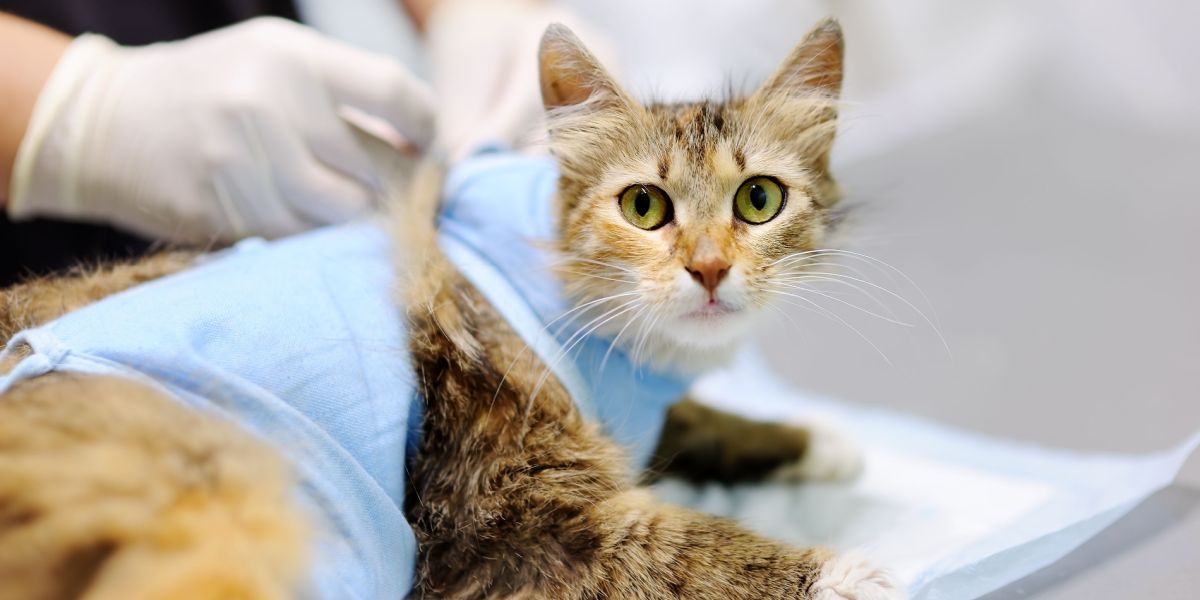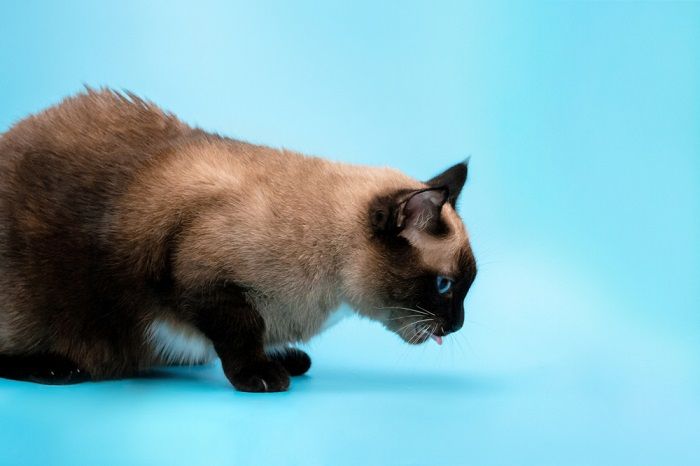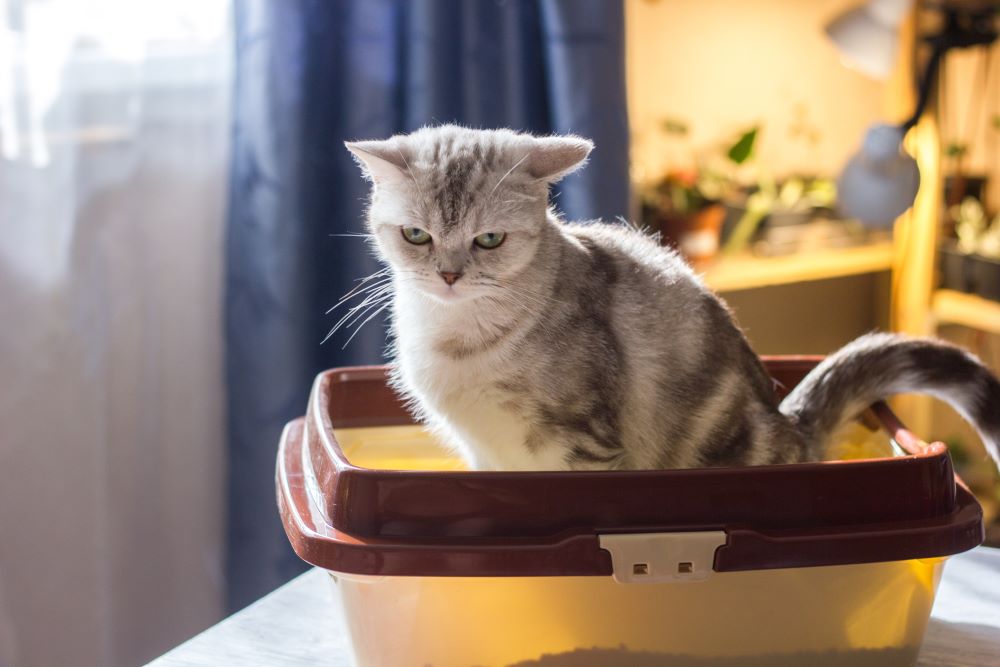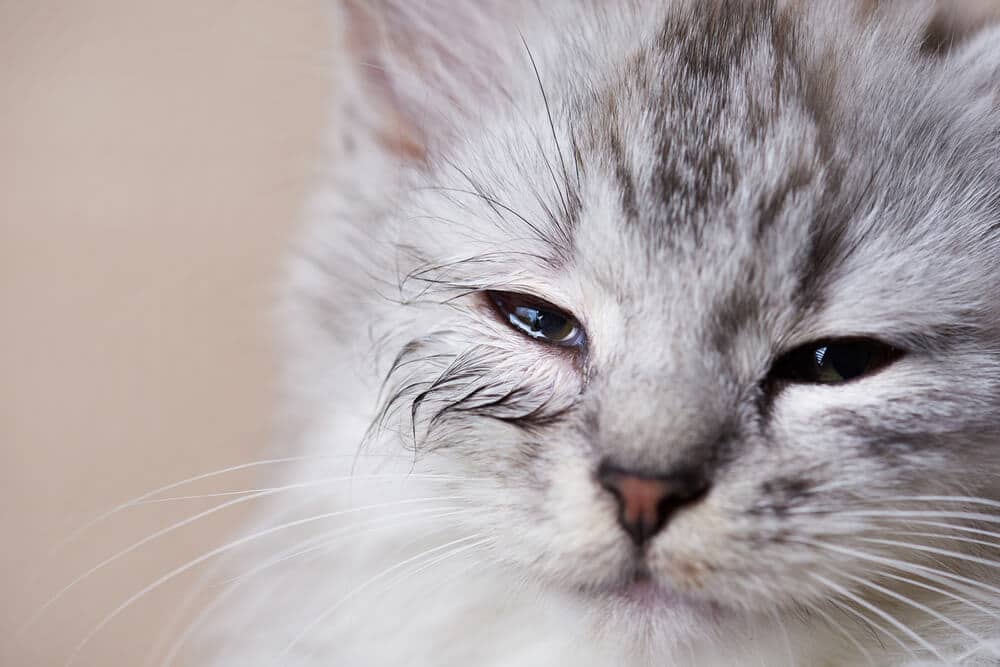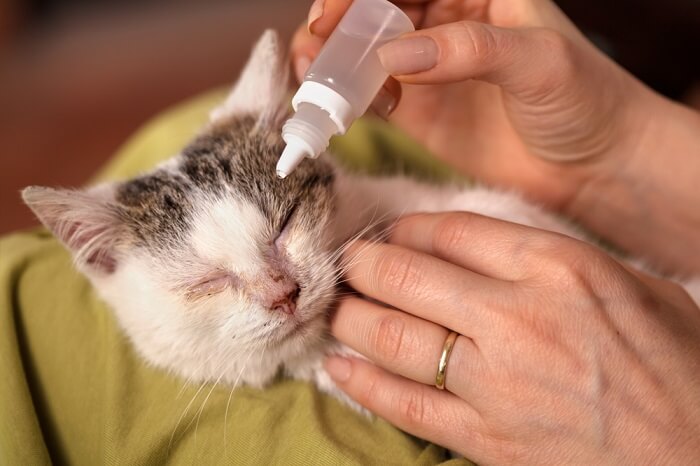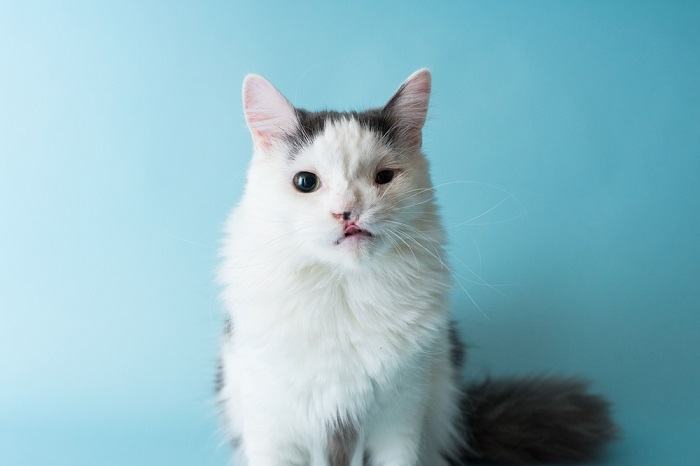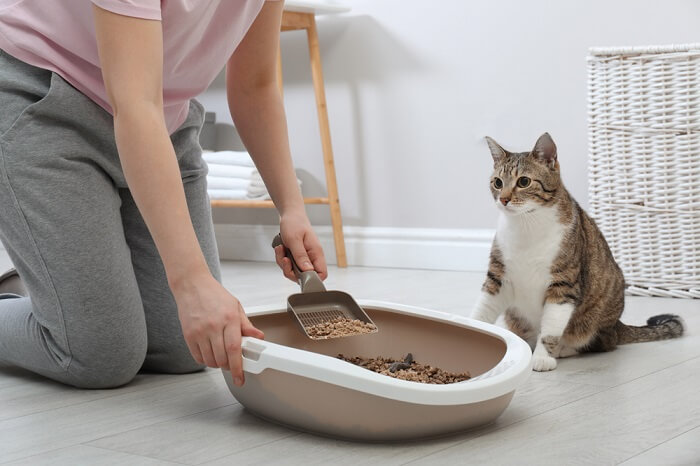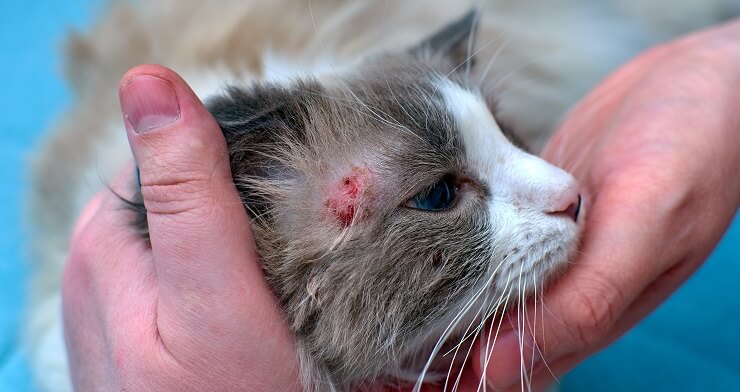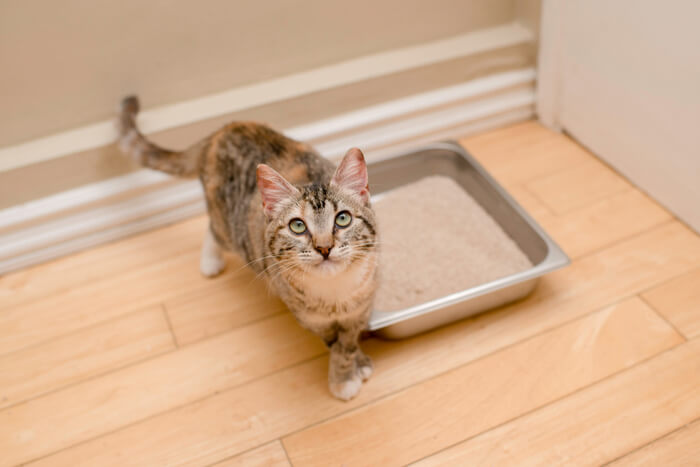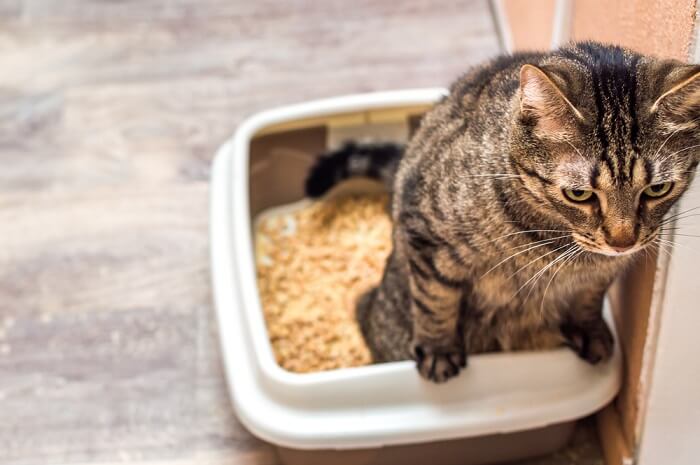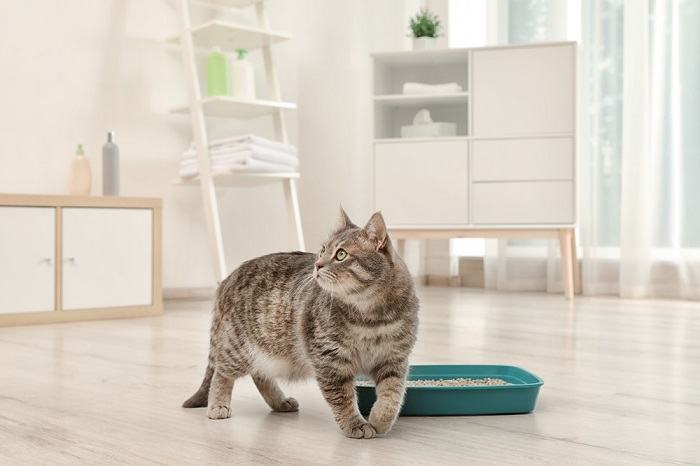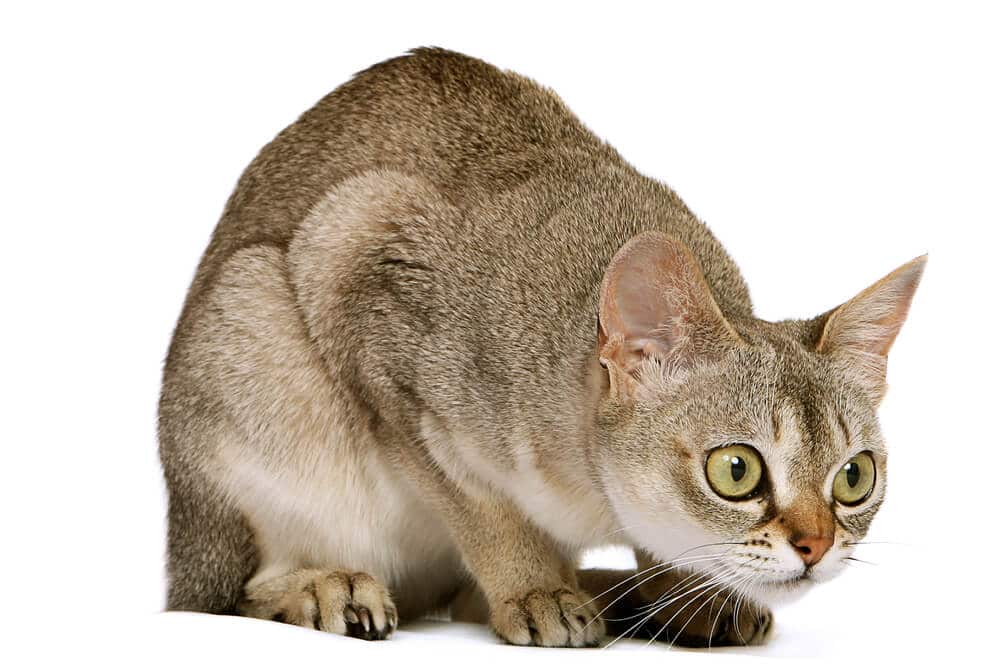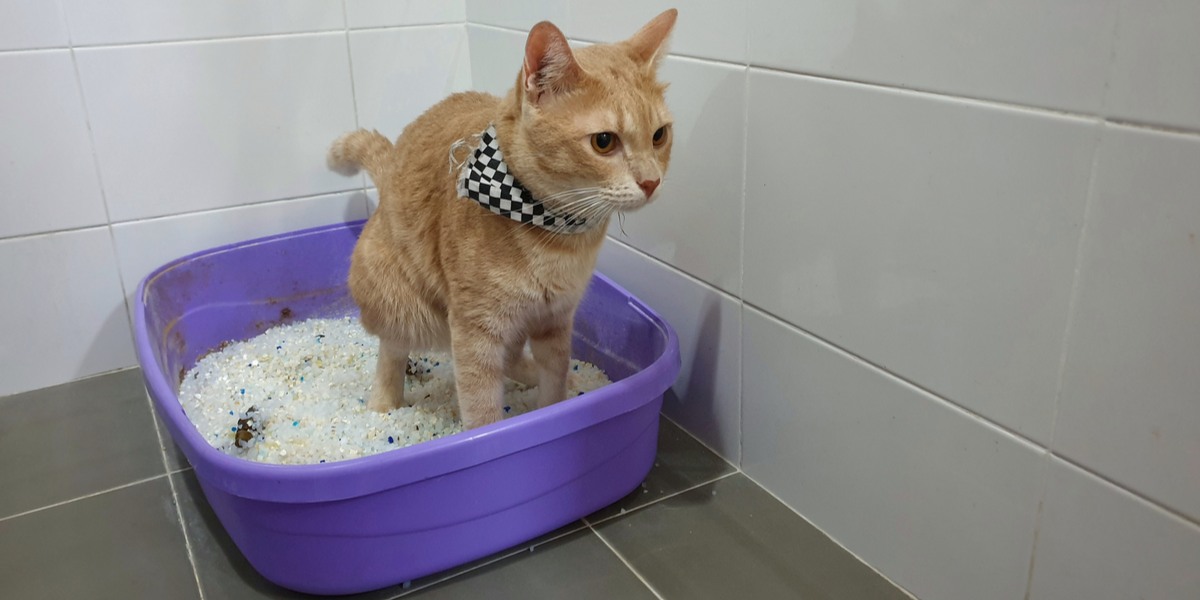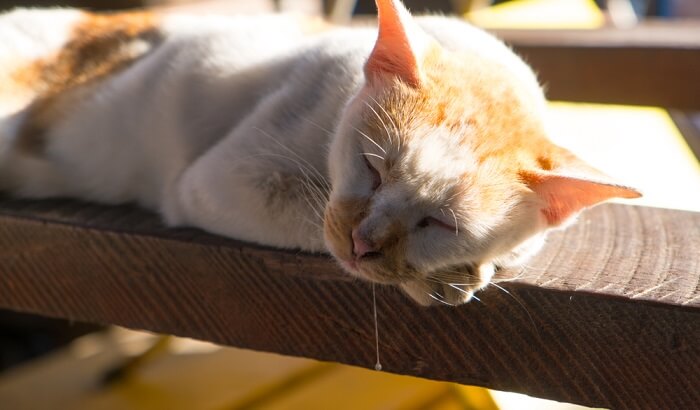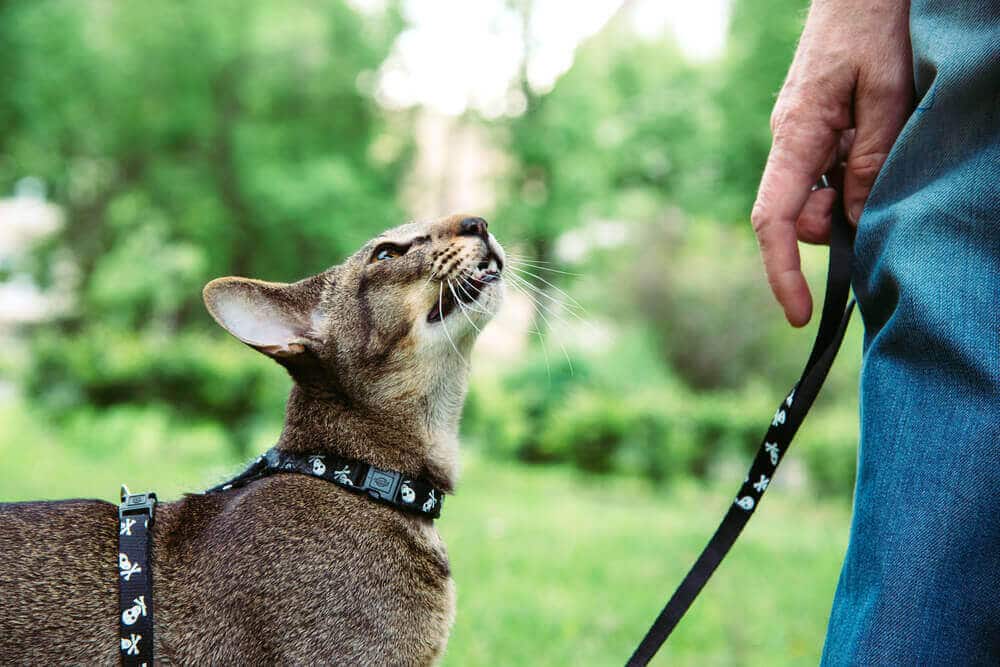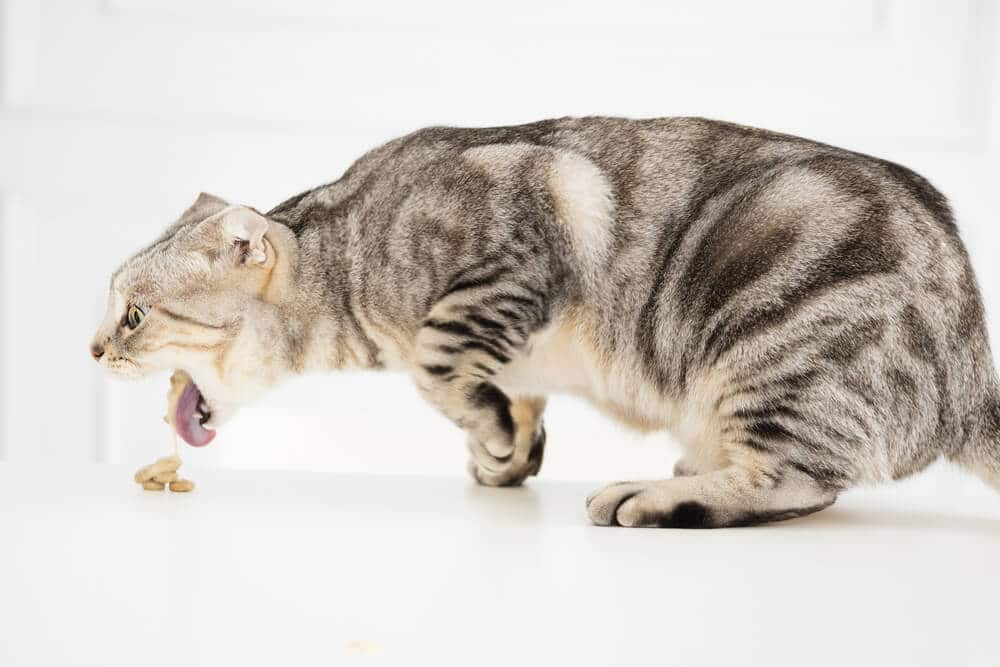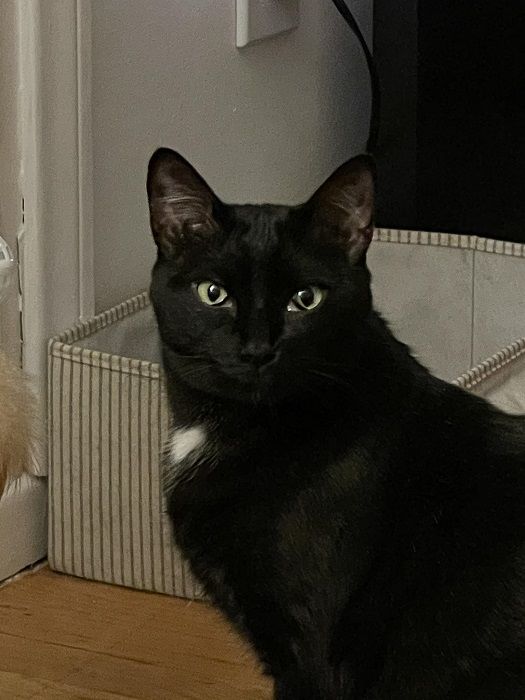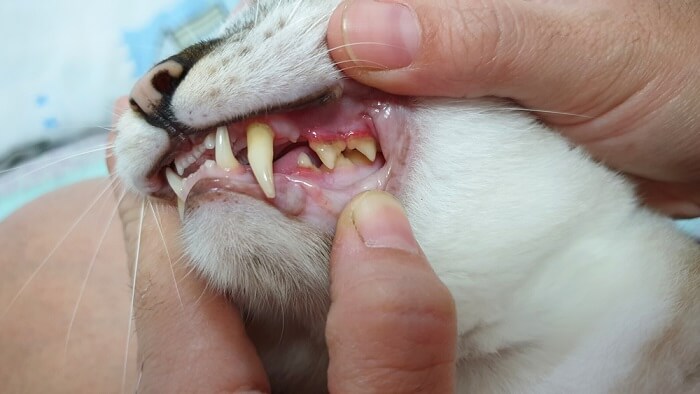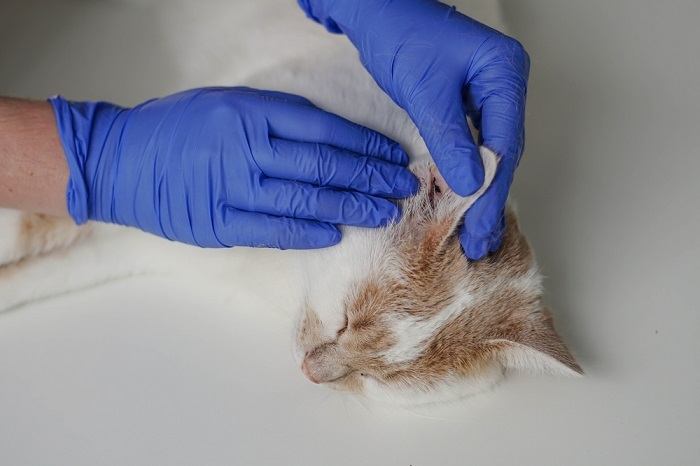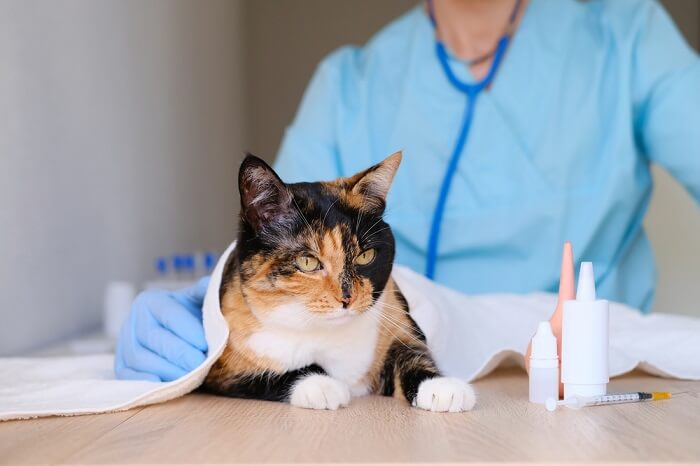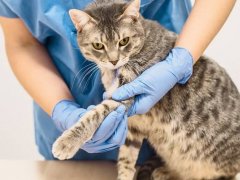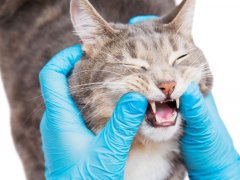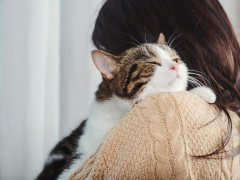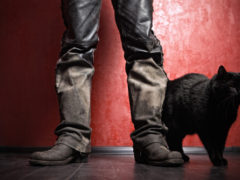One of the most common dilemmas for cat carers is: when do you need to take a cat to the emergency vet?
If your cat is injured, ate something poisonous, or is showing other signs of acute distress and illness, you should rush them to an emergency vet. Emergency vets usually cost 50% to 100% more than the regular vet, but they provide immediate care that could save your cat's life. Some symptoms, like repeatedly visiting the litter box and vomiting, may or may not be emergencies, depending on severity. Key Takeaways
When your regular daytime vet is closed, this can be a difficult decision, and it must be one of the most frequent reasons why people go to internet search engines during evenings, nights, weekends, and holidays.
Nobody wants to go to the emergency vet if they don’t need to go, for a number of reasons:
- It’s pricey (often over twice as expensive as the regular veterinarian)
- It’s time-consuming to get there (often twice as far away as the daytime vet)
- It’s stressful (most cats dislike being bundled into a cat carrier and transported in the car)
- It’s a huge worry (they often decide to hospitalize your pet, and you head home on your own, full of anxiety about your pet’s health and the high bills you are going to have to pay).
Of course, if you need to go to the emergency vet, then you need to do it. But what about if it isn’t really necessary? Nobody wants to waste their time and money, not to mention inflict stress on their pet.
The aim of this article is to help cat carers make that tricky decision, to explain the common situations that are likely to be dilemmas, and to give answers to the pressing question that needs to be answered: does this cat need to be taken to the emergency vet?
It is important to note that if a decision is made not to take a cat to the ER, steps should be taken to confine the cat indoors until the daytime vet opens: any cat that is in distress may decide to take themselves elsewhere if they are allowed outside.
Any sick cat needs to be kept under the direct supervision of their carer until they are either fully recovered, or until the professional opinion of a vet has been obtained.
Also Read: How Much Is Pet Insurance For A Cat, And Is It Really Worth It?
When to Take Your Cat to the Emergency Vet: Key Symptoms
Some symptoms should always be considered signs that your cat is having an emergency.
The first point to understand is that there are some situations that are clearly always emergencies. Look for the following behaviors and clinical signs. If your cat is exhibiting any of these symptoms, take your cat to an emergency clinic to get immediate veterinary attention.
1. Your cat ate something toxic.
If the cat is seen by a vet within an hour, an injection can be given to induce vomiting, which is the most effective way of dealing with most (but not all ) toxins. If it’s over an hour, it’s too late because the toxin will have passed beyond the stomach and will have begun to be absorbed. So this is an acutely time-sensitive emergency.
Also Read: Poisoning In Cats: Causes, Symptoms, and Treatment
2. Your cat had a serious accident.
Emergency veterinary care is required if a cat has suffered a serious physical accident such as being hit by a car: often the injuries are difficult for a layperson to assess, and a thorough physical assessment by a veterinarian can be life-saving for a wounded cat.
3. Your cat is having serious difficulty breathing.
This can be life-threatening, and simple treatment (such as the administration of oxygen) can be life-saving. Open-mouth breathing, rapid breathing without exertion (a high respiratory rate), and strained breathing are all signs of an emergency.
Also Read: The 3 Types Of Heavy Breathing And What They Mean
4. Your cat is bleeding a lot.
Go to the vet immediately if your cat is bleeding significant amounts, whether from an injury, from the digestive system (vomit or feces), or from the urinary tract.
5. Your cat is straining and can’t pass urine.
It’s a veterinary emergency if a cat is straining unproductively to pass urine in the litter box (i.e. pushing to pass urine, but with no liquid being produced).
6. Your cat has been seizuring for more than three minutes continuously.
If a cat is seizuring for more than three minutes continuously, or if there are clusters of seizures (i.e. seizuring, recovering, then seizuring again a short time later, recovering, seizuring again etc., bring them to the emergency vet right away.
7. Your cat is dull and non-responsive.
Regardless of the cause, a cat who is not responding and seems dull should see an emergency vet immediately.
8. Your cat is visibly distressed.
Bring your cat to the emergency vet right away if your cat is screaming, seeming extremely agitated, or showing other signs of acute distress.
Watch on Cats.com YouTube: Educate yourself on feline body language to make sure you know the difference between normal behavior and signs of injury or serious illness.
9. Your cat is very thirsty but not drinking.
See an emergency vet immediately if your cat is so thirsty that they are sitting with their head over a water bowl, wanting to drink but for some reason not actually drinking.
10. Your cat is severely dehydrated.
It’s a veterinary emergency when a cat is so dehydrated for any reason that, when the skin over their shoulder area is pinched, it “tents” i.e. it remains in a tent-like shape rather than flattening down immediately as it does in healthy cats.
11. Your cat’s body is showing gross abnormalities.
See a vet immediately if there is an obvious gross abnormality, such as a very distended abdomen, an obviously broken limb, or serious physical damage to any part of the body (e.g. eyes, head, body, limbs, tail).
Is Cat Constipation An Emergency?
While constipation can be a serious issue, it’s not usually an emergency.
Constipation describes a situation where a cat finds it difficult to pass feces, needing to strain more than usual to pass a motion. There are two additional definitions that fall into this bracket:
- Obstipation describes severe constipation, where a cat finds it difficult or impossible to defecate.
- Megacolon describes the consequences of severe constipation or obstipation, where the colon becomes grossly enlarged due to the backing up of fecal matter that cannot be passed.
Each of these three versions of the same general problem can follow a number of possible causes, e.g. fractured pelvis, dietary abnormalities, neurological diseases, foreign bodies, and cancer.
None of these three issues are usually acute emergencies: as long as affected cats are taken to the veterinarian within 48 hours, this will generally be sufficient timing.
Veterinary care is important, both to empty out the accumulated feces (e.g. enemas, intravenous fluids for rehydration), and also to carry out tests to make a specific diagnosis of the underlying cause (e.g. x-rays, ultrasound, blood tests) so that treatment aimed at the primary cause can be undertaken.
Also Read: Cat Bloodwork (Different Types of Tests, Health Conditions, And Costs)
There are occasions when severe constipation can be an acute emergency requiring a visit to the emergency room: if the cat spends their entire time on the litter box straining, if they seem unduly distressed (e.g. not behaving normally at other times, not eating, etc), or if they show other serious signs of being unwell (see “cat emergency symptoms” above).
Is An Eye Infection In A Cat An Emergency?
Your cat’s eyes are incredibly delicate, so you need to pay close attention to determine whether or not their infection is an emergency.
Whenever a cat has one, or both, eyes that appear unhealthy, a cautious approach is needed. Eyes are delicate structures that are easily damaged, and if in doubt, the precautionary principle should apply: i.e. take the affected animal to the vet.
There are occasions when eye infections do need emergency attention:
- If the eye is closed, and the surface of the eye cannot be seen
- If there is blood coming from the eye
- If the eye itself is physically damaged
- If the cat is trying to rub the eye on the ground, or using their paws
- If the pupil (the central black area) of one or both eyes is either pinpoint (very small) or widely dilated (very big). As before, if a cat with any signs of eye infection also shows other serious signs of being unwell (see “cat emergency symptoms” above), then they should be taken to the emergency vet.
However, non-emergency eye problems are also common. Examples include
- Cats with chronic viral infections may have long-term low-grade or recurrent discharge from one or both eyes. Sometimes they may also be sneezing and/or coughing.
- Cats with allergic reactions causing minor inflammation of the eyes
- Cats with minor injuries around the eyes
In such cases, there may be some redness and discharge in and around the eyes. A first aid approach would involve cleaning the affected areas twice daily with mildly salty water (a teaspoonful of salt in a pint of boiled water, cooled down). If there is no improvement after 48 hours, affected cats should be taken to the daytime vet for a routine check.
Also Read: Cat Eye Infections: Causes, Symptoms, & Treatment
Is Hyphema In Cats An Emergency?
Hyphema, or bleeding in the eye, can point to other issues that may cause an emergency. Therefore, a cat with this condition should be brought to an emergency vet immediately.
Hyphema means “bleeding inside the eye”, and it can happen for a number of reasons including trauma (e.g. an accident where there is a blow to the head), high blood pressure (causing bleeding from blood vessels inside the eye which “pop”) and coagulation disorders.
The concern when a cat develops hyphema is that if there is a serious underlying cause that remains untreated, there could be further bleeding episodes elsewhere in the body (such as in the brain) and these could have very serious consequences.
For this reason, if a cat develops hyphema, they should be taken to the emergency vet without delay.
Also Read: Uveitis In Cats: Causes, Symptoms & Treatment
Is Anisocoria In Cats An Emergency?
A cat with anisocoria, or one pupil larger than the other, should be taken to the emergency vet right away.
Anisocoria describes the situation where the pupil of one eye is much larger than the pupil of the other eye. (The pupil is the black area in the centre of a cat’s eye).
There are two main variations of anisocoria:
- One pupil may be much more dilated (bigger) than normal. This most commonly happens due to loss of vision in that eye, caused by many possible factors including hemorrhage at the back of the eye linked to high blood pressure.
- One pupil may be much more constricted (smaller) than normal. There are many reasons for this, including trauma (to the eye itself, or to the skull), and changes in the internal eye pressure, as well as other possibilities.
In general, sudden onset anisocoria can indicate a serious underlying problem, and it’s wise to seek urgent attention to have this assessed.
As an example, high blood pressure can cause bleeding at the back of the eye, which can cause a sudden onset enlarged pupil. It’s important that medication is given to reduce the blood pressure before other consequences of high blood pressure follow.
Also Read: Heterochromia In Cats: Cats With Different Colored Eyes
Is Blood In Cat Stool An Emergency?
Bloody stool may or may not be an emergency. It depends on the severity of the bleeding.
Whenever an animal is bleeding, it always needs to be taken seriously. However, it is not always an emergency: it depends on the severity of the bleeding.
- If there is copious blood, or if there is blood mixed with diarrhea, then the affected cat should be taken to the emergency veterinarian without delay.
- If there is just a trace of blood, or a few drops, in the stool, with normal feces as well, then this can wait until the day time vet is open. The cat should be kept indoors and monitored closely in case the situation deteriorates.
As before, if a cat with a just trace of blood in their stool also shows other serious signs of being unwell, they should be taken to the emergency vet.
Also Read: What To Do If You See Blood In Your Cat’s Stool?
Is A Cat Abscess An Emergency?
If your cat has an abscess, it’s usually not considered an emergency. In some cases, however, a visit to an emergency vet may be justified.
It’s common for cats to suffer from abscesses: these are particularly common after cats have been fighting. In general, a cat abscess is not an emergency, and simple home first aid can be given, including:
- Use scissors to trim away the fur around the area of the abscess
- Clean the affected area twice daily with mildly salty water (a teaspoonful of salt in a pint of boiled water, cooled down).
- In particular, wipe away any discharges which may be produced by the abscess.
- Take the cat to the daytime vet as soon as they open, so that additional treatment (such as antibiotics) can be given.
There are cases when a cat with an abscess should be taken to the emergency vet:
- If the cat is visibly in pain
- If the cat is very dull and quiet
- If the abscess is causing gross swelling (e.g. over the eye area)
- If the cat also shows other serious signs of being unwell
Is Cat Cystitis An Emergency?
In most cases, cystitis is not considered an emergency. However, if your cat can’t pass any urine, is in obvious pain, or seems extremely desperate, they should see an emergency vet right away.
Cystitis, also known as Feline Lower Urinary Tract Disease (FLUTD), is a complex condition, with signs usually presenting as a cat visiting the litter box repeatedly, passing small amounts of urine, sometimes yowling as if in pain, and sometimes passing small amounts of blood.
This condition is not usually an emergency, unless the following signs are seen:
- If the cat is in obvious pain
- If the cat is unable to pass any urine at all (complete urethral blockages are more common among male cats)
- If the cat is making continual, unrelenting, efforts to pass small amount of urine (i.e. if they are not leaving the litter tray to carry on with normal life in between episodes)
- If the cat also shows other serious signs of being unwell
A first-aid approach includes ensuring that the cat has access to fresh drinking water and encouraging them to drink as much as possible. If possible, a urine sample should be collected and placed in a sterile container. The affected cat should be taken, along with the urine sample, to the daytime vet as soon as they open, so that a detailed examination and investigation can be carried out.
Also Read: Urinary Tract Infection In Cats
Is A Cat Peeing Blood An Emergency?
If your cat is peeing blood, it’s usually not considered an emergency, but passing large amounts of urine in the blood can be.
Sometimes cats with cystitis pass small amounts of blood in the urine: see above to find out what action needs to be taken. Otherwise, the action to be taken depends on the severity of the blood in the urine.
- If a cat is passing large amounts of blood in the urine, then they should be taken to the emergency vet for a full assessment (which includes checking for problems with blood clotting, etc).
- If there is just a trace of blood, with normal urine as well, then the cat can be monitored at home until the daytime vet opens. However, a visit to the emergency vet is always needed if the cat also shows other serious signs of being unwell
Is A Cat UTI An Emergency?
Usually, a UTI is not considered a cat emergency, but some exceptions apply.
A cat UTI is, in most cases, very similar to a cat with cystitis, and the same rules apply.
Affected cats often visit the litter box repeatedly, passing small amounts of urine, sometimes yowling as if in pain, and sometimes passing small amounts of blood.
This condition is not usually an emergency unless the following signs are seen:
- If the cat is in obvious pain
- If the cat is unable to pass any urine at all
- If the cat is making continual, unrelenting, efforts to pass a small amount of urine (i.e. if they are not leaving the litter tray to carry on with normal life in between episodes)
- If the cat also shows other serious signs of being unwell
At home, ensure that the cat has access to fresh drinking water, encouraging them to drink as much as possible. If possible, a urine sample should be collected and placed in a sterile container. The affected cat should be taken, along with the urine sample, to the daytime vet as soon as they open, so that a detailed examination and investigation can be carried out.
Is A Cat Coughing An Emergency?
While coughing is a serious symptom and should be addressed by a vet, it’s not necessarily an emergency symptom.
Coughing is always a serious sign of ill health that should not be ignored. However, a cat does not need to be rushed to the emergency vet just because they have an occasional cough.
In most cases, as long as the cough is only occasional and they are otherwise well, it is sufficient to monitor them carefully, taking them to the usual daytime vet for an assessment when they open. In the interim, the cat should be kept indoors and monitored closely, in case the cough deteriorates or the cat starts to show other signs of ill health.
There are occasions when a coughing cat should be taken to the emergency vet:
- If the cat is coughing more than occasionally (e.g. every fifteen minutes or more often)
- If the cat seems distressed by the coughing (agitated, vocalizing, etc.)
- If the cat has difficulty breathing as well as coughing
- If the cat also shows other serious signs of being unwell
Is Cat Diarrhea An Emergency?
Generally, a cat who is having diarrhea does not need to be rushed to an emergency vet. However, some exceptions apply.
Diarrhea is a common problem, especially in kittens and young cats, and it should never be ignored. However, diarrhea does not mean that a cat always needs to be rushed to the emergency vet. As long as the cat remains well, bright, active, and is behaving normally, then it’s likely to be safe to wait until your daytime vet opens to seek veterinary assistance.
Exceptions to this rule include:
- If there are significant amounts of blood in the diarrhea
- If the cat is having diarrhea more often than just occasionally (e.g. more often than once an hour)
- If a young kitten has serious diarrhea
- If the cat also shows other serious signs of being unwell
Is Cat Drooling An Emergency?
Drooling is usually not a sign of an emergency, but it can point to health issues.
Drooling – or hypersalivation, also known as ptyalism – can happen for many different reasons in cats, and in many cases, there is no need to rush to the vet.
As an example, some cats drool as a type of normal behavior when they are contentedly purring beside their owners.
However, there are other cases where drooling can be a sign of a significant problem that needs urgent professional attention.
- Drooling can happen if a cat has eaten something irritant
- Drooling can be caused by some poisons
- Drooling can happen after accidents where a cat suffers injuries to the jaw or mouth
- Drooling can indicate neurological issues in some cases
The decision on whether to take a drooling cat to the vet depends on a number of factors: the emergency vet should be contacted:
- If the cat is suddenly drooling copiously and continuously for no obvious reason
- If the cat also shows other serious signs of being unwell
Is Cat Limping An Emergency?
Limping is usually not a sign that you need to see an emergency vet. In many cases, it’s fine to wait until the regular vet opens.
A limping cat cannot put their full weight on a limb while walking, running, or jumping.
There are many possible causes, including:
- Cat bites
- Physical accidents
- Torn ligaments
- Underlying diseases like cancer
It is always worrying when a cat limps, but this does not mean that a limping cat always needs to be rushed to the vet: in many cases, it is acceptable to wait until your daytime vet opens to seek professional attention.
The following instances would suggest that a limping cat does need to be taken to the emergency vet:
- If the cat is not putting any weight at all on the leg (i.e. they are carrying the leg in the air)
- If the cat also shows other serious signs of being unwell (see “cat emergency symptoms” above)
Is Cat Vomiting An Emergency?
Severe, repeated vomiting, especially if accompanied with other signs of illness, should be considered an emergency. However, regurgitation, hairballs, and occasional vomiting are not.
It is common for cats to vomit occasionally, for a range of reasons from hairballs to dietary allergies and intolerance, to mild viral infections. This is not an emergency if the cat remains in good general health and if it only happens from time to time (e.g. once every few days). Affected cats should be fasted for 12 hours, to allow their stomach to settle.
However, if the cat continues to vomit repeatedly (e.g. several times an hour, or multiple times in a day), or if the cat shows other serious signs of being unwell (see “cat emergency symptoms” above), then they should be taken to the emergency vet without delay.
If a cat continues to vomit even just occasionally, they should be taken to their own daytime vet when normal business resumes following the after-hours period.
Is Cat Third Eyelid Showing An Emergency?
If your cat’s third eyelid is showing, it may indicate that your cat is sick, but it usually doesn’t signal an emergency. Image Credit: u/iwannalearntosurf
Unlike humans, cats have three eyelids.
- They have upper and lower eyelids, like humans
- They have an additional third eyelid that starts from the inner corner of each eye, moving across the eye side-to-side when the eyes are closed. This acts as an extra type of window-wiper to keep the surface of the eye clean, and to offer extra protection from trauma.
Occasionally, the third eyelid can be seen protruding from the inner corner of the eye when the eye is open. This can happen for a range of reasons. It can be a general sign of unwellness in a cat that is suffering from other problems, or it can sometimes be the only abnormal sign shown by the cat.
When this happens, it is known as Haw Syndrome, and it is not an emergency. If a cat showing its third eyelids is completely well otherwise, behaving normally, eating well, and showing no other signs of illness, this is not an emergency.
The cat should be kept indoors, monitored carefully, and taken to the daytime vet when they open again. However, a visit to the emergency vet is always needed if the cat also shows other serious signs of being unwell (see “cat emergency symptoms” above).
Is A Cat Hairball An Emergency?
While overly-frequent hairballs can signal health issues, having hairballs is usually not a sign that your cat is having an emergency.
It is common for cats to retch occasionally, or to vomit from time to time, and sometimes fur is seen in the regurgitated material, leading owners to suspect that their pet is suffering from a hairball.
This is not an emergency if it only happens from time to time (e.g. once every few days). Affected cats should be fasted for 12 hours, to allow their stomach to settle. They should be taken to their normal daytime vet in due course if they continue to vomit occasionally.
However, if the cat continues to vomit repeatedly (e.g. several times an hour, or multiple times in a day), or if the cat shows other serious signs of being unwell (see “cat emergency symptoms” above), then they should be taken to the emergency vet without delay.
Also Read: The 6 Best Cat Foods For Hairball Control
Is A Broken Cat Tooth An Emergency?
If your cat breaks a tooth, it’s generally not considered an emergency, and you can wait until your regular vet opens.
It’s common for a cat to break a tooth (e.g. in a cat fight, or a road traffic accident). A broken tooth is not, in itself, an emergency, but there may be other associated signs of trauma that may necessitate a visit to the emergency vet.
Any cat with a broken tooth should be taken to the daytime vet for a full assessment when they open again.
Also Read: The Complete Guide To Dental Cleaning For Cats
Is A Cat Ear Infection Or Hematoma An Emergency?
Usually, an ear infection or hematoma is not considered an emergency.
When a cat has an ear infection they often have itchy ears, when the lining of the ear becomes inflamed, causing cats to shake their heads and itch their ears with their paws. Sometimes the ear pinna (the ear flap) may become thickened and swollen due to blood-like fluid gathering inside the ear pinna: this is called an aural hematoma.
In most cases, these conditions are not acute emergencies: as long as the cat is reasonably comfortable, these patients can be monitored overnight and over the weekend until the daytime vet is available again.
Exceptions to this rule include:
- If a cat has such itchy or painful ears that they are distressed, continually shaking their head or scratching at their ears
- If an affected ear is actively bleeding
- If a cat with signs of ear infection or hematoma also shows other serious signs of being unwell (see “cat emergency symptoms” above)
In these cases, affected cats should be taken to the emergency vet for prompt attention.
Also Read: The 7 Best Ear Mite Treatments For Cats
How Much Is An Emergency Vet Visit For A Cat?
The cost of an emergency vet visit depends on your cat’s condition. In most cases, the cost is about 50% to 100% more expensive than that of a regular vet.
There are no global rules about the cost of an emergency visit to the vet, and the best answer is to call the emergency vet that you plan to attend and ask them for an estimate of the costs.
In general, emergency veterinary facilities do have higher costs to cover compared to daytime vets (all of their staff need to be paid at a premium rate because they are being asked to work during atypical hours).
Also Read: How Much Does It Cost To Own A Cat In 2023
As a result, in general, fees are higher than for daytime vets. In most cases, the fees are likely to be anywhere between 50% more expensive and double the normal daytime fees, but this does vary from location to location.
As an example, a daytime veterinarian might charge $60 for a consultation, while an emergency veterinarian might charge $120 or perhaps even more. Of course, this is often just the start: costs for diagnostic workups and treatments (both surgical and medical) are often higher than daytime veterinarians.
Also Read: Top 10 Things Your Vet Wishes You Knew
Frequently Asked Questions
How do you know when a cat needs to go to ER?
A cat should go to the ER if they require immediate veterinary attention. Go to the ER if your cat ate something toxic, had a serious accident, is having difficulty breathing, is bleeding a lot, is straining to urinate and can't, has been seizuring for 3 minutes or more, is dull and unresponsive, visibly distressed, very thirsty but not drinking, severely dehydrated, or showing gross physical abnormalities.
When should I take my cat to the vet immediately?
Take your cat to the vet immediately if they're showing signs of acute injury, illness, or distress. Immediate veterinary care may be needed to save your cat's life.
How do I know if something is wrong with my cat?
A few key signs that your cat is unwell include labored breathing, repeated vomiting, coughing, diarrhea, not eating, visible distress, and unresponsiveness.
